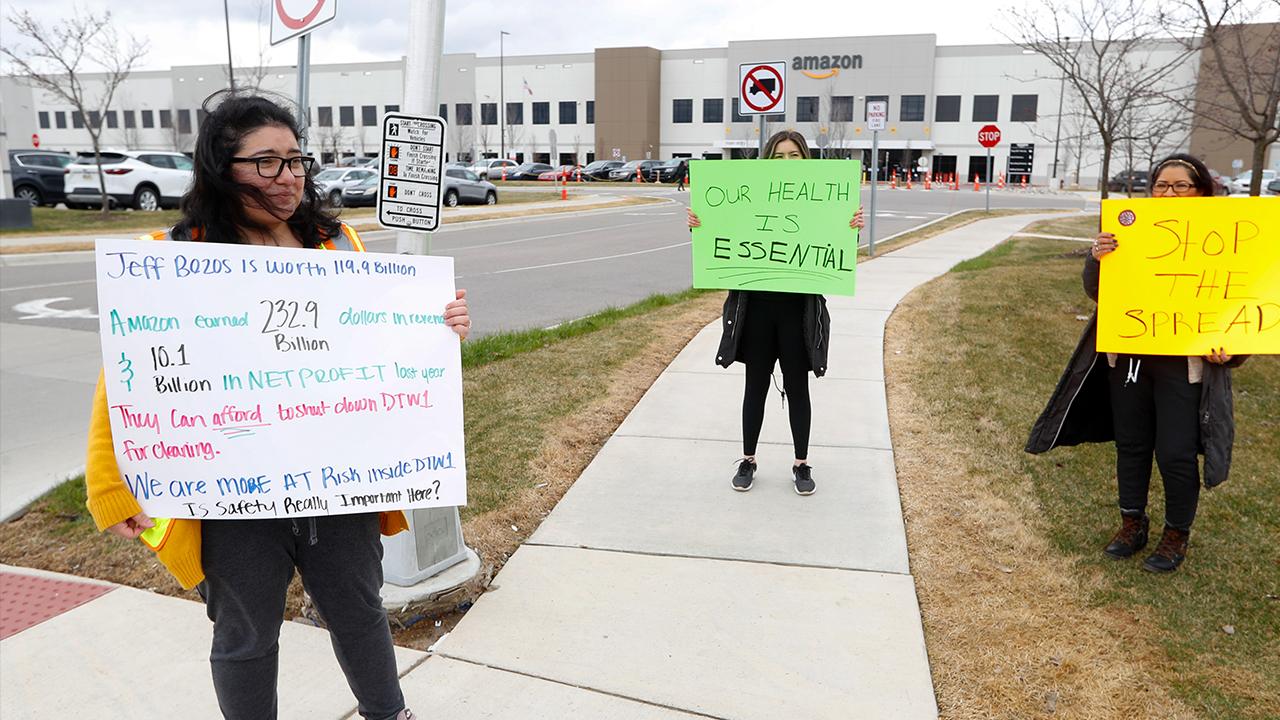Walmart trailed supermarkets amid peak coronavius panic-buying, data shows
Some shoppers might have concluded that 'Walmart is one of the worst places for lines'
Get all the latest news on coronavirus and more delivered daily to your inbox. Sign up here.
LONDON/NEW YORK -- Americans increased their visits to supermarkets far more than to Walmart Inc stores as panic-buying peaked in mid-March, a Reuters analysis of foot traffic to retailers in the United States shows.
Yet by early May, visits to Walmart had rebounded and were outpacing visits to supermarkets, according to the analysis.
GET FOX BUSINESS ON THE GO BY CLICKING HERE
The data offers a snapshot of some of the dramatic changes in Americans’ shopping patterns in the weeks before and after the United States implemented lockdowns intended to curb the spread of coronavirus.
Bentonville, Arkansas-based Walmart gets more than half its U.S. revenue from grocery sales. The retailer on Tuesday will report its first-quarter revenue and earnings, providing a look at how it fared as COVID-19 hit a growing number of states.
CORONAVIRUS PUSHES WALMART TO GIVE EMPLOYEES ANOTHER ROUND OF CASH BONUSES
Reuters compared foot traffic observed by SafeGraph from the first week of March through early May. SafeGraph compiles anonymized location data from mobile devices and compares it with building footprints to measure traffic. The number of mobile devices recorded by SafeGraph fluctuates, so Reuters adjusted the data based on the number of devices SafeGraph reported each day.
“During panic buying time, it was ‘I want to get my groceries, and that’s all I want to do. I want to do it safely, I want to get in and out,’” said Randy Hare, portfolio manager at Huntington Private Bank, which owns shares of Walmart, Costco Wholesale Corp (COST.O) and others. Some shoppers might have concluded that “Walmart is one of the worst places for lines,” he said.
WALMART PAYS HOURLY STAFF NEARLY $180M IN BONUSES WITH 'MORE TO COME'
Walmart declined to comment.
Walmart saw an 18% increase in foot traffic from March 13 to March 17 compared to the first week of March, Reuters found. That’s about half the 37% increase at supermarkets and other grocery stores during the same time period, when consumers stocked up on goods in advance of coronavirus lockdowns implemented around the United States.
During the same period, Target Corp (TGT.N) saw a 14% rise in foot traffic, less than half the increase at grocery stores. Major dollar store chains saw a 26% increase in foot traffic.
A Target spokeswoman referenced an April 23 press release, which said the company experienced a “surge in traffic and sales” in mid-March followed by a decline in in-store sales as “guests across the country began to shelter in place” and turned to online orders. She declined further comment.
(For a graphic, see: here)
After that initial surge in visitors, traffic to Walmart and other big box and grocery stores fell in late March and early April, Reuters found. Walmart lost more traffic than most supermarkets, but it still performed better than Target and Amazon.com Inc’s Whole Foods (AMZN.O), which saw traffic drop by 26% and 33%, respectively, during the first two weeks of April.
An Amazon spokeswoman was not immediately available for comment.
CLICK HERE TO READ MORE ON FOX BUSINESS
Walmart has announced that stores would allow no more than five customers per 1,000 square feet, or roughly 20 percent of store capacity. Despite this, as of May 6, foot traffic to Walmart stores had rebounded and was up 16% compared to the first week of March.
“They’ve made a lot of investments in grocery and they did it at the right time,” said Huntington’s Hare, highlighting Walmart’s plans to have more than 2,000 stores where they can deliver groceries within two hours. “If COVID would have happened two years ago, they wouldn’t have been ready.”
The SafeGraph data does not include transaction size, and it is possible that some shoppers made fewer trips but purchased more items per trip. The foot-traffic data also includes traffic by retail employees and gig workers fulfilling shoppers’ orders placed online.
Analysts have forecast Walmart will post its best quarterly sales in at least three years on Tuesday, but that is likely to come at the cost of profits as the retailer, much like Amazon, has invested millions to tackle the pandemic.
